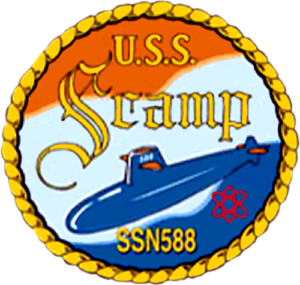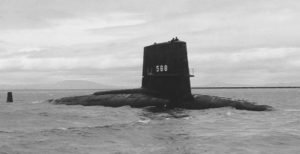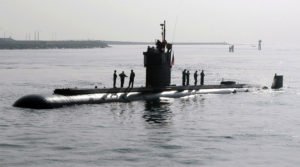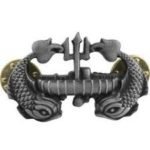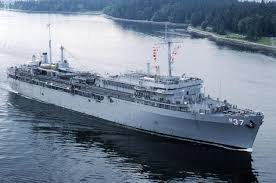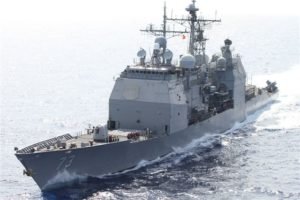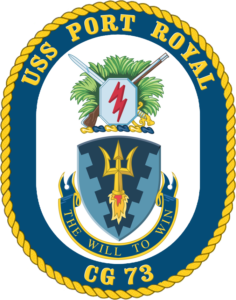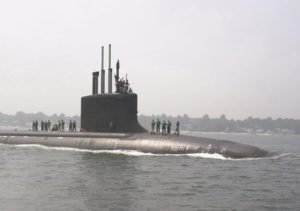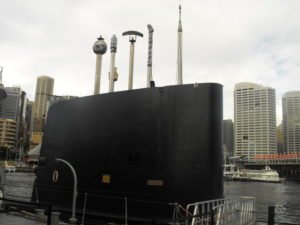Ron Charest's Portfolio
Training and Instructional Design
Location
Woodbridge, VirginiaMy Educational Autobiography
By Ron Charest
Introduction
This educational autobiography has been difficult to write and not just because I’m narrating nearly sixty years of continuous learning. Many parts of this narrative are painful, with a few parts that bring pride. But I feel it is important to honestly relate the history that has shaped my approach to learning, and how these experiences will continue to shape my approach as a future instructional designer and adult education teacher.
First: I have never been a “good student,” even though I’ve always respected education and continuous learning. My educational history has been checkered and generally difficult. I now believe many of my issues can be traced to the neurodevelopmental condition “Attention Deficit Hyperactivity Disorder – Predominantly Inattentive” (ADHD-I). I was only diagnosed in 2018 and started medical treatment. However, the symptoms that led to this diagnosis have been with me for most of my life.
My symptoms of ADHD-I include short attention spans; difficulty paying attention to details and making “careless” errors; trouble organizing tasks and hesitancy to start large projects; forgetfulness in daily activities; the appearance of not listening when spoken to, and difficulty completing tedious or time-consuming tasks. It’s always been extremely difficult for me to focus on reading technical literature even in my professional career. Another facet of my ADHD-I issues has been what some ADHD researchers describe as “hyperfocus”: the ability to become completely immersed in a project and rapidly master new learning material, but then move on to something else.
Having made myself familiar with ADHD-I symptoms I now believe I’ve struggled with this condition starting at least midway through elementary school. My symptoms seemed to have been more pronounced during time periods when I was under high stress or chronically fatigued and have generally increased with advancing age. I also suspect my ADHD-I coping strategies, developed without understanding the underlying causes, have not always been effective for academic learning.
About This Autobiography
I have nearly sixty years of continuous learning to relate. When I include the context of social, political, and cultural events of the time, along with positive and negative experiences and technology impacts, I have a lot of subject material to write about. As a way of keeping my educational autobiography manageable I have chosen an interactive web page format.
My learning experiences form three eras: my K – 12 education, my navy career, and my post-navy career. I will relate these experiences in a chronological timeline of learning events posted in a brief format. Any relevant social, political, and cultural events critical reflections or insights discussions of the particular educational model of the time period, or other narration relevant to the specific learning event may be accessed via accompanying sidebar icons that open pop-up windows. My readers may elect to open as many or few of these pop-up windows as you have the patience to read.
I’ve also created occassional “Tool Tip” windows to explain a word that doesn’t rate a full sidebar popup; these words are underlinedExampleExample of a Tool Tip window used to explain a term. and in blue font.
I will finish this autobiography with reflections on why I have chosen to join the instructional design and technology field as a third and probably last career.
K - 12 Educational Experiences, 1961 - 1974
1961 - 1972 Farmingdale, Long Island, New York
I remember my elementary school classes as regimented and unforgiving to students who “acted out,” defined as doing anything the teacher didn’t explicitly tell us to do. High test scores received positive reinforcements with gold stars on the papers and public praise from teachers. Poor test scores received negative reinforcements with teachers publicly shaming the students in class and sending letters home to the parents. I received far more negative reinforcements than positive.
My learning issues started early. By the beginning of third-grade I was a failing student. Upon a teacher’s advice, my parents had me take a vision test and discovered I was extremely near-sighted. I was failing because I literally could neither see the classroom chalk board nor read my books. I was prescribed strong (thick) glasses which solved my immediate learning issue. Young children in that era who wore glasses were not common as they are now; I remember being the only student in my class and one of the very few in my entire elementary school who wore glasses. Although glasses corrected my vision they also earned me unwanted attention from bullying classmates.
Having corrected my vision, I became an indifferent student with mostly passable grades. However, by sixth grade I was typically reading two to three books per week far above my “approved” reading level. The contrast between my recreational reading and indifferent school grades did not go unnoticed by my teachers or parents, and I was constantly chastised by all concerned for “being lazy.” The bullying from classmates became relentless. There was no relief; if I tried to ignore my attackers I was mocked for being weak and attacked again. If I tried to fight back, my teachers accused me of being a troublemaker and disciplined me.
Junior high school (grades seven to nine) was slightly better. I excelled in shop and mechanical drawing but was barely passing math and foreign language (Spanish). I was also struggling in English and history classes; I would read the textbooks cover-to-cover in the first month of classes and then lose interest. The bullying finally tapered off by ninth grade, possibly because the perpetrators found better uses of their time. By now I was consistently reading four to five books a week, a mix of science fiction with occasional nonfiction books and classical literature. There was no focus to my reading; I just browsed library shelves and checked out books on impulse that looked interesting. I also spent a lot of time at home tinkering with “science projects” and model rocketry. My junior high school classes were more flexible and forgiving to students who were less conforming. However, I continued to experience far more negative reinforcements than positive.
In high school, during tenth grade, I started to do well. At that time Farmingdale High School was considered one of the more progressive high schools in the area. I was doing passably well in most classes except foreign languages and math, and focused on a major in mechanical drawing, part of the school’s industrial arts program. My teachers were uniformly better than those in my junior grades. That year, several teachers formed an experimental program that might have been a precursor of today’s advanced placement programs. I applied and was accepted into this program, scheduled to start the following school year.
That summer my family and I moved to the Hudson valley region of New York State.
![]() Farmingdale Culture
Farmingdale Culture
![]()
Farmingdale Education Model
![]()
Bullying
![]() Experimental Education Program
Experimental Education Program
![]() Long Island Economy
Long Island Economy
1972 - 1974 Pine Bush, Hudson Valley Region, New York
My former major in mechanical drawing wasn’t offered here so I was placed in a math and science major. I did get into an electronics shop program which was about the only class I did well in that year. I felt my teachers, some of whom were long-time residents with their own children enrolled in the school district, were mostly indifferent or uncaring educators. I distinctly remember one teacher spending the entire year telling us what we were going to learn in his class, sometime soon, whenever he finished gossiping and talking about hunting.
About mid-year I mentally checked out of my studies. I increased my recreational reading to an average seven books per week, burning through the school library. For most of the books I read, mine was the first and only name on the book’s checkout card. When I wasn’t reading I worked part-time at a summer camp next to our property. My parents were too focused on their own issues to pay attention to my schooling. I ended eleventh grade a “C” student and desperate to finish school. My guidance counselor helpfully explained that after high school I needed to go to college or trade school or else, in his words, “you’ll be a failure the rest of your life.”
![]()
Pine Bush Culture
![]()
Pine Bush Educational Model
By the start of my senior year, 1973, I was ready to quit school and get out of Pine Bush. I started thinking about joining the navy. I had been inspired by my maternal grandfather and one uncle who had been sailors in their youth, and I had grown up on their sea stories. I was also fascinated by submarines and had a dream of becoming a submarine sailor. That October I answered an advertisement for the local navy recruiter.
![]()
Primary Education – Commentary
Navy Learning Experiences, 1974 - 1996
1974 Navy Enlistment and Basic Training
I took the military entrance exams and scored in the top two percentile, which qualified me for every program the Navy offered. My poor vision disqualified me for some of the more esoteric programs such as nuclear power and navy diving but I was accepted for submarine duty and accepted into a training program only available to people with my top entrance scores. Prerequisites for both required me to have a high school diploma and to enlist for a minimum of six years. In January 1974 I enlisted and was scheduled to go on active duty immediately upon completing high school. I bowed to the needs of the greater good and stuck out my remaining senior year.
I graduated in June 1974 as a straight “C” student, received my diploma, and left home for navy basic training (“boot camp”) five days later. I was seventeen years old and I never again wanted to see the inside of a classroom.
![]()
Political Context – Vietnam War
Learning Experience - Navy Technical Training
Upon arriving at Great Lakes Training Center I was processed in for the next convening Electronics Technician (ET) “A” school class. I was then told about my training program, referred to as the “training pipeline,” as this was the curriculum needed to be completed prior to our first ship assignment (“The Fleet”). I’d already been accepted into submarine duty so I was in a submarine training pipeline consisting of ET “A” school, followed by submarine school, then submarine-specialized electronics training, and finalized by a “C” school, all of which would require a minimum of one and a half years. Only then would I first see the inside of a submarine.
Although I had some trepidation about going back inside a classroom I quickly found myself excelling. I had been doing some hobby electronics back at home in addition to the electronics shop class in my high school junior year, so I already had basic electronics knowledge.
The course work was intensive and kept me focused, I got along reasonably well with my classmates, and I enjoyed what I was learning. Except for occasional uniform inspections classes were our only duty. We were in school eight hours each day, five days per week, with occasional evening homework. Weekends were normally free time. The classes were tightly structured and the instructors, all of whom were senior ETs with at least six years fleet experience, were dedicated educators. Throughout my first 24 weeks of ET “A” school I easily remained in the top third of my class.
After completing training in Great Lakes I transferred to the submarine base in Groton, Connecticut, for sub school. I spent eight weeks learning the intricacies of nuclear submarines. Topics included hydraulics; compressed air; hydrodynamics; electrical power distribution; submarine electronic systems; torpedoes; ballistic missiles, and the basics of nuclear-powered propulsion.
Then I was back studying electronics again, this time maintenance of specialized electronic equipment I would be responsible for maintaining aboard submarines. During this phase of training I began having academic issues. I couldn’t maintain focus and dropped to the bottom third of my class. I was getting tired of school and wanted to start living the life of a submarine sailor.
I struggled through class, graduated, and transferred to the naval base in Hawaii for my sixteen week “C” school on the operation and maintenance of highly advanced (for that era) electronic warfare intelligence-gathering equipment installed on certain submarines. During “C” school I academically crashed. I could no longer maintain focus on classes and emotionally I felt as if I was back in my senior year of high school. Although I loved being in Hawaii I was having culture shock issues and just flat tired of classrooms. The instructors placed me on mandatory remedial academics meaning almost every weeknight one instructor stayed late tutoring me. I finished the bottom of my class with a “mercy pass” as the school didn’t want to drop me.
I finally reported aboard my first submarine seventeen months after joining the navy.
![]()
Navy Ratings
![]()
Navy Education Model
![]()
Training Technology
![]()
Decreasing Grades
1976 – 1981 USS Scamp (SSN 588)
My first learning experience on Scamp was qualifying as a submarine crew member. The qualification process starts the day a new person checks aboard. So, on Friday November 22, 1974, I reported aboard USS Scamp (SSN 588), a nuclear fast attack submarine, which happened to be in Hawaii. I was handed a set of qualification books and told we were getting underway to San Diego the following Monday.
Learning Experience – Submarine Qualifications
I also had to complete qualifications for a myriad of different minor tasks while simultaneously performing my assigned job of maintaining submarine electronics equipment. Despite finally achieving my dream of being a crew member on a submarine, my qualification progress was spotty. Qualifying crew members had to show weekly progress against a set of standards and if we fell behind we were placed on mandatory after-work study hours. While in port I fell behind due to my working requirements but at sea I was able to catch back up.
I hand-traced the Scamp’s numerous piping and machinery systems, learning where all associated valves, pumps, motors, electrical switches, storage tanks, and other components were located throughout the boatSubmarine Terminology: Submarines are called “boats,” never “ships,” by their crews, a tradition that dates to the early days of the first U.S. Navy submarines that were only 53 feet long and held a crew of six people. Over the years since, Admirals periodically request submariners use the term “ship” instead of “boat.” Those Admirals have been ignored.. I studied schematic drawings of the boat’s systems until I could draw them from memory. The only area I was not required to learn was the nuclear reactor compartment as per navy regulations only people who completed nuclear power training were allowed there – this was the program from which I had been disqualified due to poor eyesight. I learned how to report casualties, how to combat fires, and how to operate all non-nuclear systems. I learned my duties for various shipboard routines including normal at-sea operations and different types of simulated combat operations.
Finally, I was ready for the next phase of my submarine qualifications. One day I spent several hours with one of our commissioned officers on a “walk-through”, showing him every mechanical and electrical component on the boat and explaining its purpose. Having successfully passed my walk-through I was ready for the last qualification event: my oral exam known as the “qual board”. Several days after completing my walk-through, the ship’s executive officer (second senior officer on-board) convened my qual board. With him was one of our chiefs and two junior enlisted crew members one of whom was nuclear power trained. For the next four hours they grilled me. I was required to draw from memory the schematics of four shipboard systems randomly chosen by the board members. I explained the heat cycle of the nuclear power system, the fresh water distribution system, and the process for launching torpedoes. I described how to combat an engine room fire and line up the ventilation system using the snorkel mast. After four hours the board members decided they’d grilled me enough. I passed.
Several days later, on Friday August 6, 1976, in front of the entire crew, our commanding officer presented me with my qualification certificate and pinned a set of silver dolphins onto my uniform. I was qualified in submarines just a few weeks past my 20th birthday. Today, that qualification certificate hangs on my wall next to my college diploma. I wore silver dolphins on my uniform every day after for the rest of my navy career.
Learning Experience – Scamp University
Crew members are expected to continually train for different tasks and expand their ability to maintain and operate ship’s equipment. Some tasks (such as first-aid) required periodic retraining. Submarine crews hold constant drills for firefighting, flooding, loss of major equipment, and combat drills. At the fleet training level submarines conduct near-constant operations with surface ships (aircraft carriers, cruisers, destroyers, and frigates) and other submarines in combat exercises known as Anti-Submarine Warfare (ASW) training.
My at-sea duties placed me in an integral part of every fleet exercise we held while on Scamp.
After two years of operating my primary “C” school equipment, I qualified on Ship’s NavigationSubmarine Terminology:In the Navy, the enlisted people who perform the daily navigation duties are referred to as Quartermasters. and for the last two years my primary duty was navigating the submarine at sea. As a crew member I trained constantly in all aspects of submarine operations and simulated combat. The learning experiences I most enjoyed, however, were our occasional port visits. We visited ports in Canada; Panama; Japan and Okinawa; the Philippines; seven countries of South America, and made periodic visits to Hawaii.
I transferred off Scamp to another submarine in January 1980. I left Scamp about the same time my former high school college-bound classmates had just landed their first post-college jobs. In truth, Scamp became my Alma Mater. Nearly 40 years later I still keep up contact with some of my former shipmates and attend ship’s reunions.

USS Scamp
![]()
Submarine Qualifications
![]()
Submarine Qualification Training Model
1980 – 1982 USS Dolphin (AGSS 555)
After four years on Scamp I was coming up on the end of my obligatory six years enlistment and faced with the decision to either reenlist or leave naval service. My department head talked with me and suggested I consider submarine special programs, then called the “Deep Submergence Program.” This consisted of a small fleet of navy owned and operated deep-diving submersiblesSubmarine Terminology: A submersible is a small submarine with underwater endurance of only a few hours and requires a surface ship for support, typically a research vessel. In contrast, a submarine has longer range and can operate for weeks or months without outside support. used for marine research, search and recovery, submarine rescue, and two special-design research submarines. The program sounded different and interesting, and I wasn’t yet ready to leave the navy anyway at that time.
I applied for the Deep Submergence Program and was accepted for an assignment to the deep-diving diesel-electric research submarine USS Dolphin (AGSS 555) also home ported in San Diego, California. I left Scamp and reported aboard Dolphin in February 1981.
Learning Experience – USS Dolphin
I served on Dolphin for a little over two years. My learning experiences came from being around the teams running experiments and performing operations that even within the submarine community were unique. As with Scamp, at-sea duties placed me in an integral part of every operation we conducted. I had the opportunity to observe the experiments and occasionally assisted the research teams with their equipment repairs.
I also completed my mandatory submarine re-qualifications on Dolphin which earned me the right to wear the silver Deep Submergence Insignia on my uniform, along with my silver submarine dolphins.
As my tour on Dolphin ended I had to decide on my choice of next assignment. A normal navy career consists of a tour of sea duty followed by a tour of shore duty, then another sea duty tour, with the length of time per tour determined by a person’s rank and rating. I had already bollixed my rotation cycle by going from one submarine directly to another and was told I now needed to take a shore assignment.
Navy instructors are carefully screened and selected from only top performers. I requested, and was accepted, for navy Instructor Duty.

USS Dolphin
1982 – 1986 Instructor Duty
Instructor Training School
Prior to reporting to my next assignment as a Navy Technical Instructor I attended Instructor Training (IT) school, a four week “C” school that awarded another NECNECNavy Enlisted Classification, a micro-designation within a specific rating that indicates a specific ‘C’ school upon successful completion. The school was in San Diego and my class convened in April 1982.
During the four-week course we were taught public speaking, instructional theories, and curriculum development using the Navy model of that era. We were required to develop and present to our class four progressively more complex presentations during the course, with the last presentation written to the Navy training model. As with my earlier “A” and “C” schools the classes ran eight-hour days five-day weeks. Upon graduating we were awarded the NEC 9502 designation as a Navy Technical Instructor.
Eight years after barely graduating high school I had earned formal designation as navy instructor.
![]()
Navy Training Programs
1982 – 1986 Submarine Training Facility
Upon completing IT school, I reported to Submarine Training Facility (colloquially referred to as SubTraFac), the submarine training center at the navy base when I had previously served on Scamp and Dolphin. I quickly qualified to teach several one and two-week technical courses and settled into the school routines.
Learning Experience – Navy Instructor.
Two years into what was to become a four-year instructor assignment I was selected to attend SubTraFac-sponsored curriculum development training. This was a two-week class that taught the submarine-specific curriculum format.
Following successful completion of this course, I was first tasked to revise one existing course. After completing the revision, I developed a completely new course SubTraFac had needed. Once I completed and implemented that course I implemented a two-week course new to SubTraFac but developed at another navy training center. As part of the course implementation process I trained new instructors to teach those courses.
Near the end of my four-year tour my command awarded me with “Master Training Specialist” (MTS) designation, a formal designation awarded to the top instructors in a given training center. To earn this recognition, I was required to consistently receive excellent instructor evaluations, show demonstrated mastery of curriculum development, and complete an oral board with one of our training center’s educational specialists on all aspects of navy training. When I transferred to a sea duty tour six months later I was one of two designated MTS instructors in SubTraFac, an organization composed of about 260 instructors.
1982 – 1984 National University
The Department of Defense (DoD) had recently started offering tuition assistance for active duty personnel as part of the total pay and benefits package and being on shore duty gave me a lot of free time. Several colleges and universities had offices on base, so I researched them and applied to National University for an Associates of Applied Science (AAS) in Business Administration.
National Universities’ program was designed around four-week class schedules, one class at a time. The course required two classroom sessions per week night and a full day every other Saturday. Homework and semester projects were the norm for all classes. I would complete one course then immediately jump into another.
I completed my AAS Business Administration and received my diploma October 2, 1983, graduating Cum Laude.
While working on my AAS I realized I enjoyed Marketing the most out of the various elements of Business Administration. I enjoyed multi-disciplinary research and communications work and decided to pursue an undergraduate degree in Marketing.
After completing and receiving my AAS Business Administration Diploma I started my core courses for a BS Marketing program. I successfully completed several upper-level business courses but then mentally “hit a wall.” I could no longer handle the demands of the intense class schedule. I quit school and focused on developing my social life for the rest of my shore tour.
![]()
National University
1986 – 1989 USS Dixon (AS 37)
Near the end of my four-year tour at SubTraFac I requested a sea duty tour on a submarine repair ship, also known as “Submarine Tenders.” I then received orders to USS Dixon (AS 37), again home ported in San Diego.
I had been promoted to Chief Petty Officer one year before transfer from SubTraFac and as a new Chief I was expected to run one of the many repair shops on Dixon. My assigned shop was the “Submarine Mast, Antenna, and Hydrophone Repair Shop,” which came with my colloquial title of “Shop Master”. This shop handled repairs of the highly specialized retractable submarine masts. My shop also repaired submarine sonar sensors known as hydrophones.
Learning Experience – Shop Master, USS Dixon
The repair work my shop was expected to perform required knowledge of hydraulic systems; mechanical cable linkages; pressure-proof watertight connectors; electrical cabling; hydrostatic testing; torque settings; crane lifts and rigging; fiberglass repair; camouflage painting, and machining work. All repairs were performed within the framework of the SUBSAFESubmarine Terminology: SUBSAFEA quality assurance program implemented by the US Navy after the USS Thresher was lost during sea trials due to faulty workmanship. The level of quality assurance in this program is perhaps second only to that of the nuclear power program. Since implementing this program, the Navy has not lost any submarines due to faulty workmanship. quality-assurance program. Notably absent from my shop duties was any work involving actual electronics.
Two-thirds of the 19 people assigned to my shop were drawn from electronics ratings with the rest drawn from mechanical ratings. None of my personnel had experience with this work before being assigned to the shop. I also had no earlier experience with this type of work. Personnel turn-over was high; most people rotated out to a different shop or transferred off Dixon after about eighteen months. Adding to my complications, my shop had been poorly served by the previous several Shop Masters and earned a well-deserved reputation for being among the worst-managed shops on Dixon.
The work was fast-paced and demanding. We would plan out a repair job and our plans would usually be good right up until step one, at which point all bets were off and we had to figure things out as we went along. For most of the time I managed this shop my normal work schedule was twelve hour days and six day weeks. During periods when the shop was really busy I worked longer hours. I did discover I had a talent for “thinking on my feet” and working well under stress caused by everything going wrong at the worse possible times.
There was a formal navy-sponsored JourneymanJourneyman:A journeyman is a skilled worker who has successfully completed an official apprenticeship qualification in a building trade or craft. Journeymen are considered competent and authorized to work in that field as a fully qualified employee. They earn their license by education, supervised experience and examination. certification program with an associated NEC for mast, antenna, and hydrophone repair. However, the certification could only be obtained by at least two years of relevant work experience and on-job training followed by passing a written exam.
After two years managing the shop I applied to take the certification exam and passed. I became one of only a handful of navy personnel at that time to hold the highly specialized Journeyman NEC for Submarine Mast, Antenna, and Hydrophone repair.
Shortly before I rotated off Dixon at the end of my three-year tour my shop was formally recognized as one of the best-managed shops on Dixon, during an annual inspection by Senior Navy officials.

USS Dixon
![]()
Retractable Submarine Masts
1989 – 1993 NATO Assignment, Naples Italy
I was assigned to oversee a multi-national multi-force office providing staff-level management of all logistics needs for NATO-owned communications equipment throughout Italy. My direct staff consisted of three Italian Army Warrant officers; one Italian Air Force sergeant; two US Air Force Sergeants; Two US Army Sergeants; one UK Royal Navy Petty Officer and one UK Royal Air Force Sergeant. I reported directly to an Italian Army Junior Officer. Our staff managed all logistics support for NATO-owned communications systems throughout Italy.
Learning Experience - NATO
I had married just before I was assigned to USS Dixon and my wife and I made good use of the opportunity to travel around Europe these three years.
I also gained understanding of my U.S. sister services (Army and Air Force), learned the Italian way of life which was so diametrically different than American life, and gained a working knowledge of conversational Italian.
I had consistently failed foreign language studies while in high school but after two years of total immersion in Italy I became very comfortable speaking Italian with a modest vocabulary. Had I stayed in Italy for a fourth year I am convinced I could have mastered the Italian language.
1990 – 1993 Regents College
By now I held an associate degree with some upper level credit towards a Marketing degree, and extensive navy training that potentially offered some amount of college credits. I had my educational background evaluated by an educational specialist in the military-sponsored Education Center and was recommended for a non-residency program offered by The Regents External Degree Program (Regents College), of New York State. At the time Regents College was one of only two programs in the United States that offered non-residency programs.
I enrolled and started working my courses. There were two US-based collegesCollegesTwo American colleges had extension campuses on the US Navy base: University of Lavern and Maryland State University. with extension campuses on the US military base and I was able to complete all my general educational requirements through these schools. My core business and marketing courses were more difficult.
One option Regents made available was coursework through “distance learning.” This was the Pre-Internet era and distance learning for overseas military meant mail-correspondence with a stateside college.
While I took my general requirements through different extension campuses on the US military base I also started a distance learning course through University of Illinois at Urbana Champlain. The coursework was supported by an assigned professor in Illinois and consisted of assigned textbook reading followed by reporting on the reading, with a mid-term and final exam proctored by the base Education Center in coordination with the university.
I now believe that my ADHD-I issues were an important factor in the difficulties I experienced completing this course that took me a year of effort.
By the time I was scheduled to transfer back to the US to sea duty I was still four business core courses short of completing my BS Marketing degree program.

NATO Political Context
![]()
Regents College
![]()
Navy Training Accreditation
![]()
Military Logistics
1993 – 1996 USS Port Royal (CG 73)
As I approached the end of my NATO tour I was faced with an important decision on my next assignment. I was due for another sea duty tour but did not want to go back to a submarine. Once again I was looking for something different to do. I applied for and received orders to the cruiser USS Port Royal (CG 73), a ship still under construction at a shipyard in Pascagoula, Mississippi. It was scheduled to be completed and commissioned in July 1994, and then home ported in Pearl Harbor, Hawaii, Island of Oahu.
My wife and I arrived in Pascagoula in June 1993 and by October we had already fallen in love with southern Mississippi. About this time, I passed my 20 year career point and decided to retire at the end of my Port Royal tour. We purchased a home in the Pascagoula area and my wife opted to stay there while I finished out my last two years on Port Royal in Hawaii.
Learning Experiences – USS Port Royal
I retired from active navy service and left Port Royal in February 1996 while my ship was deployed in the Persian Gulf. I was flown back to Pascagoula, Mississippi to rejoin my wife and my navy retirement from active military duty became official on April 30, 1996.
1993 – 1995 Completing Bachelor’s Degree
Two courses were available at the University of Southern Mississippi extension campus 30 miles to my west and the third at the University of Southern Alabama on their campus 40 miles to my east.
Over the next eight months in Pascagoula waiting for the Port Royal to complete construction I sequentially enrolled in and completed these three courses. I was down to one last business core course, and Port Royal was leaving Pascagoula. I took my last course as distance learning, this one though University of Southern Alabama.
As with my earlier distance-learning course, this took a year to complete. My assigned instructor did work with me but the coursework was difficult and shipboard life made it far too easy to be distracted. My mid-term and final exams were proctored by the ship’s educational officer and at the end of 1994 I did pass my course. My final transcripts were sent to Regents College and in January 1995 I was awarded my Bachelor of Science Marketing Diploma via mail.
My ending transcripts showed course work from the US Navy and seven different colleges and universities earned over a twelve-year period. I held an overall GPA of 3.54 but Regents College did not grant academic awards.
Six months later I took my Graduate Management Admission Test (GMAT) so I would have the option for a master’s in business administration (MBA) program after retirement.

USS Port Royal
Post-Navy Career, 1996 - Present
My learning experiences didn’t end with navy retirement. Transitioning to civilian life was an emotional adjustment I don’t ever care to repeat, and one that every retiring service member must deal with. My career since leaving the navy has evolved into government consulting. I drifted into logistics not through any post-navy career plan on my part but by reason that I couldn’t get a job doing anything else.
I started an MBA program through the University of Southern Mississippi extension campus but was unable to focus. Again, I suspect my issues with ADHD-I played a large role in these difficulties. I was dealing with a lot of cultural and emotional issues from the military-to-civilian transition and adjusting to life back with my wife after a two-year separation. I completed one class towards my MBA, then dropped out part-way through my second class. It is just now, 23 years later, that I’m returning to school to earn a graduate degree.
As with my navy career, my jobs have been my learning experiences as I’ve never done the same type of job twice. Over the past eight years I’ve earned five career-related certifications recognized within the military contracting field and in private industry. I’ve also earned a Teaching English to Speakers of Other Languages (TESOL) Adult Education Certification.
Since leaving the navy the highlights of my work / learning experiences include the following:
1996 – 1998
While the jobs weren’t very challenging, in looking back I realize that managing the warehouse was one of the more enjoyable jobs I’ve held in my post-navy career. We shipped out large assemblies using priority overnight freight or direct-to-user trucking services then managed the re-stock. This was also my first post-navy foray back into logistics.
Running the network also pulled me into computer software. While running the network I taught myself how to program in Microsoft Visual Basic (MS VB) and developed a new database application for managing warehouse inventory.
These two themes of software and logistics formed the basis of my post-navy career.
![]()
Website Development
1998 - 2000
While I enjoyed the work I discovered that I didn’t care for the Air Force style of management. After two years I quit to go back to a navy-centric working environment.
2000 – 2006
I worked as a subcontractor for two years building MS VB applications for different departments within the logistics group. When an opening came available I was hired directly into the yard. After another year the shipyard sent me to a training program for supportability engineering. After that training I worked as a supportability engineer for my remaining time at the shipyard, working on short studies and projects.
On August 23, 2005, Hurricane Katrina blew through the Mississippi Gulf Coast and flooded my home along with several thousand others. I had divorced from my first wife in 2000, remarried, and my new wife had just moved in. We spent our first year together rebuilding our home. In September 2006 I accepted a job in Rosslyn, Virginia, and my wife and I moved to the Washington DC area.
![]()
Ingalls Shipyard
2006 – 2008
2008 – Present
The nature of consulting work suits my learning and work styles and thus this is the longest I’ve been with one firm. My pattern with Booz Allen is to work on a given contract for two to three years then move on to a different contract with new challenges and learning opportunities. I also occasionally get invited to work on short-term projects of several months duration and do proposal writing.
To date I’ve worked on two different contracts for the US Coast Guard’s new ship construction programs; a Navy contract for the Littoral Combat Ship (LCS) program (building a training program consisting of four courses); a contract for Navy mines and mine countermeasures systems; and then worked for short while on a contract for the US Navy’s Virginia-class submarine construction program. That was the first time I’d worked within the submarine community since leaving Dixon in 1989. Most recently I moved back to another contract for the US Coast Guard to work on a third new construction ship program.
Over the past eight years I’ve earned several industry-recognized credentials in aspects of logistics and configuration management. I don’t have the academic background that my Booz Allen colleagues have, but I’ve discovered that my broad base of hands-on knowledge and skills mostly compensates for my lack of academics in providing client support. Even though my lack of formal education somewhat limits my upward mobility within Booz Allen, this is not an issue as I’m on the tail end of my planned full-time consulting career.
![]()
Booz Allen Hamilton
![]()
English as Second language
![]()
Professional Certifications
My Goals For Instructional Design
I’m approaching my second retirement age as defined by Social Security. Although I’m more than ready to spend my remaining years fishing, boating, and paddling kayaks, I also recognize I need to keep my mind active with new learning challenges. I’ve decided I need to go back into teaching, focusing on adult education. Earning my Teaching English to Speakers of Other Languages (TESOL) adult education certification several years ago was my first step. Working towards this graduate degree in Instructional Design and Technology is my next step. I want to spend at least a few years of my second retirement working in adult education as my way of giving back to my community.
My learning path has not been a typical one and the fact I’m by far the oldest person in my graduate classes is not lost on me. Un-diagnosed and untreated ADHD-I may have been a reason inhibiting my formal education, but that’s not the only reason. I’ve always placed work above academics and preferred learning by jumping in and doing something.
I don’t regret the path I’ve taken; I’ve had a rich and fulfilling life. But I also recognize I’ve been fortunate in my career choices, with my best choice being my decision to join the navy immediately after high school. The navy gave me a chance at a meaningful career and a second chance at an education after even my high school guidance counselor expected me to be a life-long failure. Not everyone is so fortunate to have a second chance the way I did.
I’d like to work in adult education as my third and (presumably) final career as a way of helping other adults who want a second chance. Learning disabilities aren’t the only reason young people may not earn a high school diploma or get into a college right out of high school. Native-born Americans growing up in economically-depressed areas with underfunded and neglected schools also struggle with limited opportunities. Some young people simply make bad life decisions that take years to recover from. Immigrants come to this country as adults looking for a better life and more opportunities than they had in their native country but struggle just to learn English as they adapt. Regardless of the reason, I believe an adult who wants to try for a better life deserves to have their second chance. In a small way, I’d like to be part of the solution by helping to offer them education.
Sincerely,
Ron Charest
[1] Clardy, A. (2000). Learning on their own; vocationally oriented self-directed learning projects. Human Resources Development Quarterly, I I(2), 105-125, cited in Sharan & Bierema, Adult Learning Linking Theory and Practice (2014)







